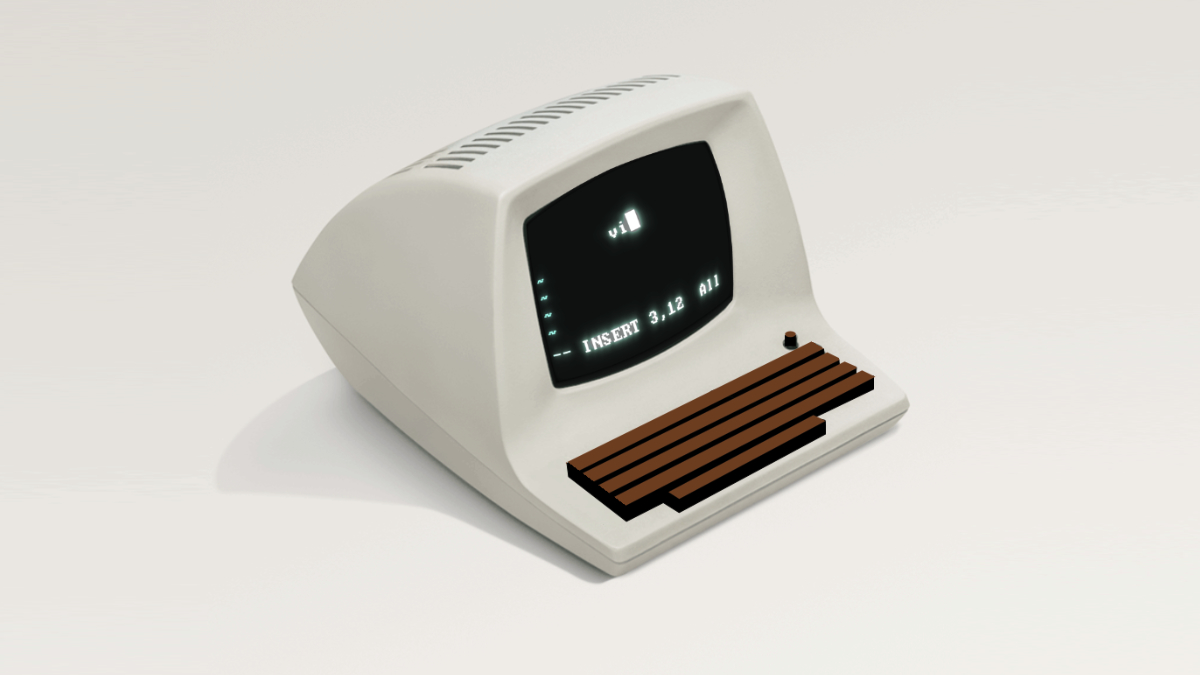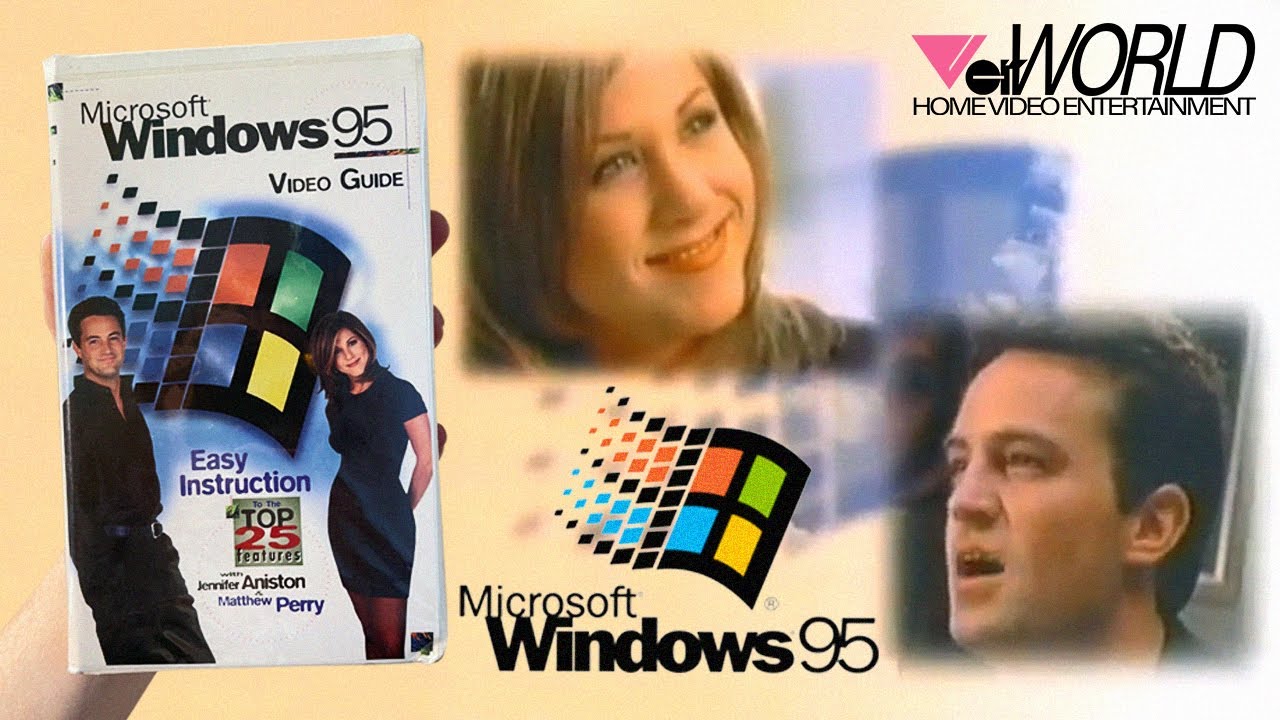Sidebar
Computer History aka Tech Time Travelers
 www.youtube.com
www.youtube.com
On April 9, 1999 the Domain Controllers for the redmond.corp.microsoft.com Windows NT4-based domain were upgraded to a pre-release version of Windows 2000 Server and thus became the world’s first production Active Directory domain:
 thenewstack.io
thenewstack.io
 www.fromjason.xyz
www.fromjason.xyz
We’re kicking things off in the new year with a returning guest, Mr. Bil Herd. He was the principal engineer on the Commodore Plus/4, C16/116, C264, C364, and the Commodore 128. Come join us at our usual location, the Alderwood United Church, 44 Delma Dr., Etobicoke ON, M8W 4N6, Canada. The meeting takes place on Thursday, January 11, 2024 at 7:30PM ET. If you’re unable to attend in person, please join us online via the Zoom link below. Thanks for attending! Join Zoom Meeting https://us02web.zoom.us/j/88059151457?pwd=RTEzUWM5bnc4cFpjVjZBYXNEMElEZz09 Meeting ID: 880 5915 1457 Passcode: 274933
 every.to
every.to
 www.macrumors.com
www.macrumors.com
A check signed by former Apple CEO and co-founder Steve Jobs sold for $46,063 at auction this week. Issued by "Apple Computer Company" in 1976, the $4.01 check was made out to electronics retailer RadioShack.

**Microsoft Ships Internet Explorer 2.0** *November 27, 1995* Microsoft Corp. shipped Internet Explorer 2.0, starting a browser war with the popular Netscape Navigator. Netscape Communications Corp. had had a virtual monopoly on World Wide Web browsers since the infancy of the web. The Netscape Navigator and Communicator browsers serve as a format for viewing and creating World Wide Web pages, as well as participating in newsgroups and sending e-mail. Microsoft promotes its Internet Explorer with specific mention of its privacy and encryption.
 www.youtube.com
www.youtube.com
For a brief moment, Nortel Networks was on top of the world. Let's enjoy that moment while we can. Part 1 of 2.
 www.youtube.com
www.youtube.com
Excel is practically synonymous with the word "spreadsheet" today, and has attained near ubiquity in the workplace and home. But it wasn't always the reigning champion of the spreadsheet market. In fact, Excel started out as a Macintosh exclusive, with Gates and Microsoft hoping that Excel could build a commanding position on the Macintosh, and then use that as a foothold to attack the dominant spreadsheet champion of the 1980s, Lotus 1-2-3. The Macintosh was in dire need of a killer app that could do for it, what VisiCalc had done for the Apple II years prior. But could Excel be that app? This is the story of how the world's most dominant spreadsheet was developed for the flailing Macintosh, a computer with a fraction of the market share of the then standard MS-DOS PC, from which humble position Excel began its long climb to total dominance. #spreadsheet #excel #documentary
 www.youtube.com
www.youtube.com
"I got sucked into researching the origins of the 3.5in floppy disk after looking into one of my recent HP drives. That sent me on a long quest to better understand the format and finding out some very interesting things I didn't even know existed!" -- [Tech Tangents](https://www.youtube.com/@TechTangents) Chapters: 0:00 Intro 0:43 Precursor History 2:05 3.5in Disk Creation 3:50 Why So Tall? 4:21 The ANSI Competition 7:23 Gaining Market Share 9:41 Who Was First to Use it? 12:27 WHO!? 15:23 The 3.5in Endures 16:28 Outro
Microsoft introduced "Patch Tuesday" in October 2003 to reduce the cost of distributing patches after the Blaster worm.[10] This system accumulates security patches over a month, and dispatches them all on the second Tuesday of each month, an event for which system administrators may prepare. The following day, informally known as "Exploit Wednesday",[11] marks the time when exploits may appear in the wild which take advantage on unpatched machines of the newly announced vulnerabilities. Tuesday was chosen as the optimal day of the week to distribute software patches. This is done to maximize the amount of time available before the upcoming weekend to correct any issues that might arise with those patches, while leaving Monday free to address other unexpected issues that might have arisen over the preceding weekend[citation needed].
 allenpike.com
allenpike.com
A long time ago – at the turn of the century, as kids would call it now – my first job was at a dialup internet service provider. Officially, I was hired to be a sort of errand-boy. Instead, the role was more interesting: a front seat for one of the great meltdowns of our time. [Here’s how it went down](https://allenpike.com/2023/dialup-world-isp)...
 www.youtube.com
www.youtube.com
Jeff Schaap joins June from Nybbles and Bytes and Bil Herd to talk about the new documentary I Adore My 64
From: Trey Harris Here's a problem that *sounded* impossible... I almost regret posting the story to a wide audience, because it makes a great tale over drinks at a conference. :-) The story is slightly altered in order to protect the guilty, elide over irrelevant and boring details, and generally make the whole thing more entertaining. I was working in a job running the campus email system some years ago when I got a call from the chairman of the statistics department. "We're having a problem sending email out of the department." "What's the problem?" I asked. "We can't send mail more than 500 miles," the chairman explained. I choked on my latte. "Come again?" "We can't send mail farther than 500 miles from here," he repeated. "A little bit more, actually. Call it 520 miles. But no farther." "Um... Email really doesn't work that way, generally," I said, trying to keep panic out of my voice. One doesn't display panic when speaking to a department chairman, even of a relatively impoverished department like statistics. "What makes you think you can't send mail more than 500 miles?" "It's not what I *think*," the chairman replied testily. "You see, when we first noticed this happening, a few days ago--" "You waited a few DAYS?" I interrupted, a tremor tinging my voice. "And you couldn't send email this whole time?" "We could send email. Just not more than--" "--500 miles, yes," I finished for him, "I got that. But why didn't you call earlier?" "Well, we hadn't collected enough data to be sure of what was going on until just now." Right. This is the chairman of *statistics*. "Anyway, I asked one of the geostatisticians to look into it--" "Geostatisticians..." "--yes, and she's produced a map showing the radius within which we can send email to be slightly more than 500 miles. There are a number of destinations within that radius that we can't reach, either, or reach sporadically, but we can never email farther than this radius." "I see," I said, and put my head in my hands. "When did this start? A few days ago, you said, but did anything change in your systems at that time?" "Well, the consultant came in and patched our server and rebooted it. But I called him, and he said he didn't touch the mail system." "Okay, let me take a look, and I'll call you back," I said, scarcely believing that I was playing along. It wasn't April Fool's Day. I tried to remember if someone owed me a practical joke. I logged into their department's server, and sent a few test mails. This was in the Research Triangle of North Carolina, and a test mail to my own account was delivered without a hitch. Ditto for one sent to Richmond, and Atlanta, and Washington. Another to Princeton (400 miles) worked. But then I tried to send an email to Memphis (600 miles). It failed. Boston, failed. Detroit, failed. I got out my address book and started trying to narrow this down. New York (420 miles) worked, but Providence (580 miles) failed. I was beginning to wonder if I had lost my sanity. I tried emailing a friend who lived in North Carolina, but whose ISP was in Seattle. Thankfully, it failed. If the problem had had to do with the geography of the human recipient and not his mail server, I think I would have broken down in tears. Having established that -- unbelievably -- the problem as reported was true, and repeatable, I took a look at the sendmail.cf file. It looked fairly normal. In fact, it looked familiar. I diffed it against the sendmail.cf in my home directory. It hadn't been altered -- it was a sendmail.cf I had written. And I was fairly certain I hadn't enabled the "FAIL_MAIL_OVER_500_MILES" option. At a loss, I telnetted into the SMTP port. The server happily responded with a SunOS sendmail banner. Wait a minute... a SunOS sendmail banner? At the time, Sun was still shipping Sendmail 5 with its operating system, even though Sendmail 8 was fairly mature. Being a good system administrator, I had standardized on Sendmail 8. And also being a good system administrator, I had written a sendmail.cf that used the nice long self-documenting option and variable names available in Sendmail 8 rather than the cryptic punctuation-mark codes that had been used in Sendmail 5. The pieces fell into place, all at once, and I again choked on the dregs of my now-cold latte. When the consultant had "patched the server," he had apparently upgraded the version of SunOS, and in so doing *downgraded* Sendmail. The upgrade helpfully left the sendmail.cf alone, even though it was now the wrong version. It so happens that Sendmail 5 -- at least, the version that Sun shipped, which had some tweaks -- could deal with the Sendmail 8 sendmail.cf, as most of the rules had at that point remained unaltered. But the new long configuration options -- those it saw as junk, and skipped. And the sendmail binary had no defaults compiled in for most of these, so, finding no suitable settings in the sendmail.cf file, they were set to zero. One of the settings that was set to zero was the timeout to connect to the remote SMTP server. Some experimentation established that on this particular machine with its typical load, a zero timeout would abort a connect call in slightly over three milliseconds. An odd feature of our campus network at the time was that it was 100% switched. An outgoing packet wouldn't incur a router delay until hitting the POP and reaching a router on the far side. So time to connect to a lightly-loaded remote host on a nearby network would actually largely be governed by the speed of light distance to the destination rather than by incidental router delays. Feeling slightly giddy, I typed into my shell: $ units 1311 units, 63 prefixes You have: 3 millilightseconds You want: miles * 558.84719 / 0.0017893979 "500 miles, or a little bit more." Trey Harris -- I'm looking for work. If you need a SAGE Level IV with 10 years Perl, tool development, training, and architecture experience, please email me at trey@sage.org. I'm willing to relocate for the right opportunity.
 pikuma.com
pikuma.com
cross-posted from: https://lemmy.sdf.org/post/4079119 > Amazing article from Gustavo Pezzi about the history of the vi editor up to vim. Did you know that vim was first developed for the Amiga? That and lots of other interesting tidbits.
 en.wikipedia.org
en.wikipedia.org
John David McAfee (/ˈmækəfiː/ MAK-ə-fee;[2][3] 18 September 1945 – 23 June 2021) was a British-American computer programmer, businessman, and two-time presidential candidate who unsuccessfully sought the Libertarian Party nomination for president of the United States in 2016 and in 2020. In 1987, he wrote the first commercial anti-virus software, founding McAfee Associates to sell his creation. He resigned in 1994 and sold his remaining stake in the company.[4] McAfee became the company's most vocal critic in later years, urging consumers to uninstall the company's anti-virus software, which he characterized as bloatware. He disavowed the company's continued use of his name in branding, a practice that has persisted in spite of a short-lived corporate rebrand attempt under Intel ownership. McAfee's fortunes plummeted in the financial crisis of 2007–2008. After leaving McAfee Associates, he founded the companies Tribal Voice (makers of the PowWow chat program), QuorumEx, and Future Tense Central, among others, and was involved in leadership positions in the companies Everykey, MGT Capital Investments, and Luxcore, among others. His personal and business interests included smartphone apps, cryptocurrency, yoga, light-sport aircraft[5] and recreational drug use. He resided for a number of years in Belize, but returned to the United States in 2013 while wanted in Belize for questioning on suspicion of murder.[6] In October 2020, McAfee was arrested in Spain over U.S. tax evasion charges.[7] U.S. federal prosecutors brought criminal and civil charges alleging that McAfee had failed to file income taxes over a four-year period.[8][9] On 23 June 2021, he was found dead due to an apparent suicide by hanging in his prison cell near Barcelona shortly after the Spanish National Court authorized his extradition to the U.S.[10][11][12] His death generated speculation and conspiracy theories about the possibility that he was murdered.[13] McAfee's wife, Janice McAfee, said she did not believe McAfee committed suicide.[14][15]
 www.youtube.com
www.youtube.com
This three part documentary covers the lifetime and story of the man who was robbed from being Bill Gates, Gary Kildall. Dive into the untold story of Gary Kildall, the overlooked genius who laid the foundation stones of the personal computing revolution with his groundbreaking CP/M operating system. In this eye-opening exposé, we unravel the momentous journey of a tech maestro who could have been in the limelight, akin to Bill Gates, but was tragically edged out by the fierce market strategies of Microsoft and IBM. Uncover the dramatic twists and the bitter rivalry that ensued as MS-DOS controversially eclipsed CP/M, bringing a sad and abrupt halt to Kildall's soaring career. Watch as we shed light on a saga brimming with innovation, rivalry, and heartbreak, echoing the turbulent early days of the software industry. Don't miss this deep dive into the life of a visionary who should have been etched in history as a titan of the tech world - ***Gary Kildall: the man who should have been Bill Gates***. #GaryKildall #CPM #DigitalResearch #TechHistory #UntoldStories
**9 Sep 2023 • Thomas Karpiniec** *I participated in a lot of LANs in the 2000s, sometimes at private homes and sometimes at dedicated LAN venues. Many strange and wonderful things happened at these events that wouldn’t make a lick of sense today. Here is a collection of unrelated memories which may be altered to protect the guilty.*
 education.nationalgeographic.org
education.nationalgeographic.org
At 3:45 p.m., Grace Murray Hopper records 'the first computer bug' in the Harvard Mark II computer's log book. The problem was traced to a moth stuck between relay contacts in the computer, which Hopper duly taped into the Mark II's log book with the explanation: “First actual case of bug being found.” The bug was actually found by others but Hopper made the logbook entry.
 www.minnpost.com
www.minnpost.com
cross-posted from: https://lemmy.sdf.org/post/1059061 > Great article on the Gopher Protocol from a few years back.















